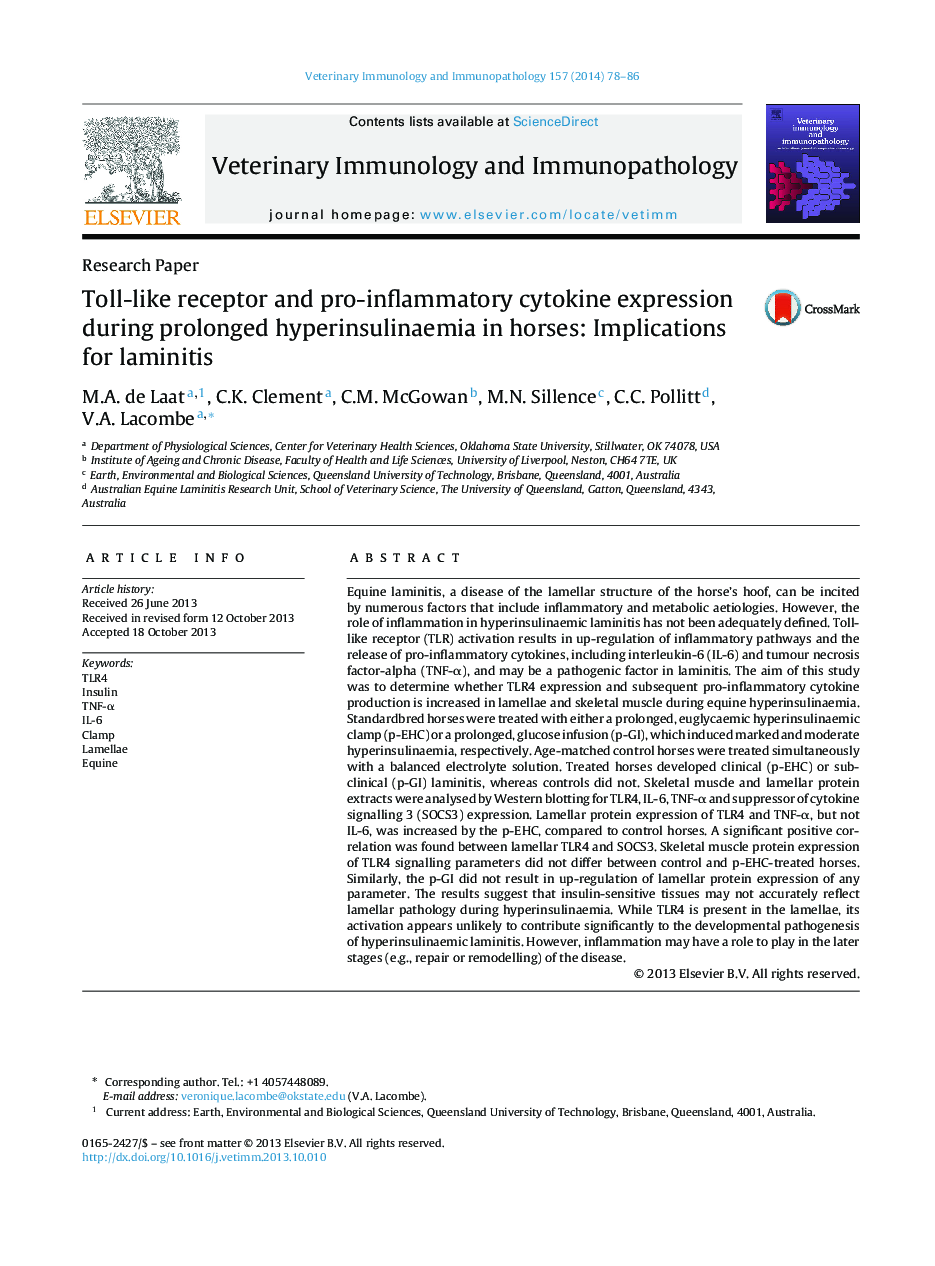| کد مقاله | کد نشریه | سال انتشار | مقاله انگلیسی | نسخه تمام متن |
|---|---|---|---|---|
| 5796846 | 1555039 | 2014 | 9 صفحه PDF | دانلود رایگان |
Equine laminitis, a disease of the lamellar structure of the horse's hoof, can be incited by numerous factors that include inflammatory and metabolic aetiologies. However, the role of inflammation in hyperinsulinaemic laminitis has not been adequately defined. Toll-like receptor (TLR) activation results in up-regulation of inflammatory pathways and the release of pro-inflammatory cytokines, including interleukin-6 (IL-6) and tumour necrosis factor-alpha (TNF-α), and may be a pathogenic factor in laminitis. The aim of this study was to determine whether TLR4 expression and subsequent pro-inflammatory cytokine production is increased in lamellae and skeletal muscle during equine hyperinsulinaemia. Standardbred horses were treated with either a prolonged, euglycaemic hyperinsulinaemic clamp (p-EHC) or a prolonged, glucose infusion (p-GI), which induced marked and moderate hyperinsulinaemia, respectively. Age-matched control horses were treated simultaneously with a balanced electrolyte solution. Treated horses developed clinical (p-EHC) or subclinical (p-GI) laminitis, whereas controls did not. Skeletal muscle and lamellar protein extracts were analysed by Western blotting for TLR4, IL-6, TNF-α and suppressor of cytokine signalling 3 (SOCS3) expression. Lamellar protein expression of TLR4 and TNF-α, but not IL-6, was increased by the p-EHC, compared to control horses. A significant positive correlation was found between lamellar TLR4 and SOCS3. Skeletal muscle protein expression of TLR4 signalling parameters did not differ between control and p-EHC-treated horses. Similarly, the p-GI did not result in up-regulation of lamellar protein expression of any parameter. The results suggest that insulin-sensitive tissues may not accurately reflect lamellar pathology during hyperinsulinaemia. While TLR4 is present in the lamellae, its activation appears unlikely to contribute significantly to the developmental pathogenesis of hyperinsulinaemic laminitis. However, inflammation may have a role to play in the later stages (e.g., repair or remodelling) of the disease.
Journal: Veterinary Immunology and Immunopathology - Volume 157, Issues 1â2, 15 January 2014, Pages 78-86
